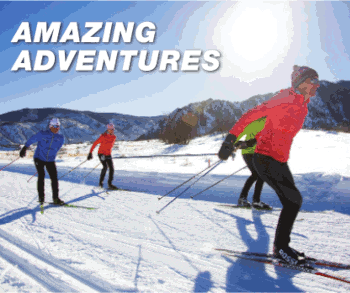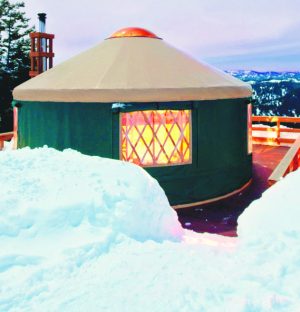April 22, 2014 – No one would argue the importance of a specifically conditioned core and hip region in order to implement and master modern cross country skiing technique. The expansive availability of “core conditioning” exercise literature, videos, and the revived interest in Pilates and Yoga is testimony to the acknowledgement by the athletic community of how vital core fitness is to skill advancement. There are, however, potential pitfalls when introducing some of these exercise techniques into one’s pre-season and maintenance conditioning programs. There may be relative orthopedic “costs” to performing some commonly utilized core and hip exercises, particularly over time. The frequency of episodic (or worse) back pain within the adult athletic population sufficient enough to interrupt training or competition parallels the general population at approximately 85%. 1
The following text will examine the “cost-benefit” of some typical core exercises and their value will be critically assessed. Suggestions on how to adapt these exercises to lessen any adverse mechanical inputs, particularly to the spine will also be presented.
To begin we must first review some basic anatomic and arthrokinematic characteristics of the human form, specifically the spine and pelvis.
The spine provides a structural foundation for attachment of ligaments and tendons, muscles, as well as an axis for core and hip movements.2 Most importantly it provides bony protection for the spinal cord and its laterally projecting nerves. Each of the 24-plus vertebral segments is specific in its structural characteristics based on location, load bearing responsibilities, motion contributions and its relationship to neighboring extremities. For example, our Lumbar vertebrae, discs and ligaments are much larger and have a denser construct than their cervical counterparts because of the gravitational load on our trunk and potentially powerful movements of our lower extremities. Each functional grouping (2+ vertebrae) of segments must balance movement, stability, and protection of sensitive structures contained within their boundaries. Your body considers your spinal cord to be “fairly important” and would never encourage excessive vertebral movement or induced instability as this would likely endanger your nervous system.
A key structure helping to maintain the balance between segmental movement and stability is the intervertebral disc. It may be compared to a jelly donut. It is composed of fibrous tissue peripherally called the annulus (donut), and has a viscous center (jelly) called the nucleus. Collectively, it is composed of 80%+/- water-based material depending on one’s age. Discs degrade and dehydrate with age, hence our relative loss in stature from our second to seventh decade. The disc is the main connection between adjacent vertebral segments and, as such, functions as a ligament by connecting bone to bone via an endplate. It must, therefore, have all required tensile strength and load bearing characteristics, yet be subtle enough to allow mutliplaner movements of the axial spine. It accomplishes this feat through a complex system of annular fiber matrix design and nuclear hydraulics. The disc, however, is not perfect and can sustain focal or generalized failure zones, particularly within the annular ring.3 Cyclic loading in excess of its mechanical tolerances can lead to annular wall compromise, nuclear bulging, frank herniations of the nucleus, fragmentation, and/or nuclear enzymatic leakage into the adjacent tissue space. The resultant irritation of nerve or soft tissue causes pain, spasm, and dysfunction. The posterior wall of the disc is at highest risk of failure due to overstretching of its fibers via aggressive, repetitive flexion movements of the trunk coupled with nuclear pressure gradients directed to the rear resultant of the same postures.4 The best analogy is one of stepping on one end of a fast food ketchup packet and observing which direction to “nucleus” migrates and at what point the “annulus” fails.
Diagram 1
Excessive posteriorly directed forces can occur traumatically, but typically involve years of bad posture and “well intentioned” but poorly executed exercises inducing adverse loading and heightened intra discal pressures. This cyclic loading eventually leads to structural compromise. Undampened excessive trunk rotation is particularly stressful to lumbar structures, especially the annular tissue matrix. Structural fatigue and thus stability compromise of the disc can lead to “buckling”5 of the spine under load. The analogy of a stack of children’s building blocks arranged with characteristic spinal curves probably best exemplifies the relative instability of an unsupported vertebral column. It takes very little unopposed directional force to destabilize the blocks. Our discs’, interspinous ligaments, and musculature all help oppose and negate direction forces encountered during sport and daily activities. Such structures surround the spine and when acting in concert provide what McGill refers to as “hoop forces”. 6
Symptoms of structural instability and damage may include; sciatica, central or lateralizing back pain, local or global spasm, extremity weakness, numbness or tingling, and functional loss. The unfortunate pathophyisiologic cycle is one of core muscle inhibition, compromised axial load dispersion, less force dampening and further discal compromise. Research has repeatedly demonstrated that core strength and postural coordination aids in the dispersion of potentially injurious forces traveling inward toward the spine. 7, 8, 9
So how do we best target the core musculature that serves a protective and functional role in spinal mechanics? First, we must abandon some of the training concepts we may have employed over the years, recognizing that some may not be scientifically based, but rather have served a marketing purpose, or anecdotal opinion.
Second, we must acknowledge that extremes of trunk motion during core exercise serves no functional purpose and may indeed be injurious. The standing “athletic position” so often referred to in coaching demonstrates no extremes of trunk flexion or extension, and is in fact “neutral”, stable and balanced. We should perform core exercises with equal focus to this position. In rehabilitation, this posture is often referred to as “neutral spine”. It is best described as the midpoint position one’s spine can attain while on hands and knees, neither maximally arched to the ceiling nor sunken to the floor.
Diagram 2
Third, we need to recognize that isolating specific muscles around the core is difficult and should, as McGill says, “Train the motion not the muscle.” Physiologists have long known that muscle fiber types are recruited based on need not speed, and functionally, the core recruits fibers and groups of muscles based on the task at hand. Focusing on safe base conditioning first, and then increasing the complexity, intensity and functionality of the ski specific core program is the recommended approach.
So how does one define safe core load in the adult population? There will always be some variance based on individual genetics, anatomy and physiology, but we do have good science with which to establish reasonable load ranges. Various investigators have looked at load to failure, measured in Newtons (N), in vivo and via cadaveric analysis.10, 11 Others have analyzed the effect dynamic muscle action maintaining neutral spine has on load dispersion and tolerance. Position sense, balance and agility also have beneficial inputs to spinal load tolerance.
Cholewicki found that a cadaveric spine “buckled” with as little as 90N (~20lbs) of compressive force (think children’s blocks). 12 He also found that as little as 10% maximum volitional contraction (MVC) of circumferential musculature added significant “stiffness” and stability to the spine in another study using live subjects. He also noted that competitive weight lifters quite readily handled loads of 2500N without compromising technique.
In other studies Cripton 12 found sheer loads of 2000-2800N to be damaging to cadaver specimens, obviously void of working muscles. Adams, et al 10 found that in young men as little as 1200-1500N was injurious to the spine if there was no attention paid to posture. Gunning 8 noted that utilizing a neutral spine position during load testing increased his subject’s tolerance by 25-45%. Combining these and other works data into a numerical “safe zone” for spinal loading, we can target approximately 3000N and up to 50% more if one is able to maintain neutral spine throughout the exercise movement as potentially safe loads.
So now we look at some intrinsic spinal load data obtained by Axler, McGill, et al 13 recorded during some common core and lower extremity exercises;
- Straight leg full sit up- 3506N
- Bent leg full sit up – 3350N
- Quarter sit up- 2392N
- Hanging bilateral straight leg raise- 2805N
- Isometric side bridge- 2585N
There are, of course, many other examples and the reader is encouraged to review the literature referenced to get a more comprehensive feel for the cost of certain exercise postures and actions. It is also important to remember that the load to failure studies were examining peak load to failure and in the skiing population we need to be sensitive to cyclic loading over time, which will entail lower loads delivered month after month, year after year.
Obviously, not all of these postures can be avoided completely during off snow training. We would, however, like to select those exercises with high muscle recruitment and functionality if we are going to subject the spine to some load. Skiers know the core groups they should target in the gym. Back paraspinals, deep spine rotators, abs, obliques, lateral hips, to name a few. If we look at McGill’s work and compare two exercises used to target the abdominal groups, we see the trade-off of high recruitment versus injurious spinal load over time. The straight leg full sit up activates the rectus abdominis (RA) to 121% of maximal volitional contraction (MVC). The exercise creates high activation but the cost to the spine significant at 3506N and over time would likely be injurious. The isometric side bridge by contrast recruits the RA to 48% MVC but at a very tolerable 2585N load to the spine. Yes, 48% is low in comparison, but recall that as little as 10% MVC can add significant stability to a spine.
In 2007, Ekstrom et al 14 did an EMG analysis of more than 15 common core, hip and thigh muscle exercises and graded their relative value based on MVC recruitment abilities. Their findings incorporate nicely into this discussion as it applies to XC skier gym programs. To summarize, back paraspinal erector spinae recruitment was best achieved using, in order of efficiency; unilateral bridge with a straight leg raise (SLR), the side bridge, regular supine bridge, and the quadruped alternate leg/arm raise (Bird Dog) exercises. All had > 35% MVC and low cost to the spine as long as attention to neutral postures is paid. Abdominal activation occurred via; side bridge, prone bridge/plank, Bird Dog and again the unilateral bridge with a concurrent SLR. Glut Medius activation occurred via ; side bridge at 74% MVC , unilateral bridge with SLR, lateral step ups, Bird Dogs and a close 5th was the side lying leg raise.
It follows that four exercises should be included in a skier’s dryland training program, both during the preparatory phase AND in season. They are the; side bridge, Bird Dog, bridge with SLR, and front planks. Attention to neutral spine is paramount even with these relatively low cost exercises. Coaches and athletes are encouraged to add variations to these in the form of incremental hand or leg weight, reps, duration, alternating limb motions (to increase rotational challenge), frequency, etc. It should also be noted, however, that excessive deviation from a neutral spine posture may increase axial loads to an injurious level over time.
Diagram 3
![Bridge with SLR should be included in an XC skier's core conditioning program. [P] courtesy of Kurt Jepson Safe, specific and effective core conditioning for XC skiing](http://skitrax.com/wp-content/uploads/2014/04/Safe-specific-and-effective-core-conditioning-for-XC-skiing8.jpg)
Diagram 4
To maximize one’s potential for efficient skiing and injury prevention, core and proximal lower extremity conditioning out and in season is a must. Every athlete and coach should design the program to be utilized with attention to individual needs, assessment of athletic competency and development, athlete goals, and consideration of the potential “cost” of some exercises over the career of the athlete.





![National camp action [P]...](https://skitrax.com/wp-content/uploads/2019/08/Duluth-4-2019-08-08-at-10.46.51-AM-300x246.png)
![Matt Liebsch on the CXC Elite Team [P] CXC...](https://skitrax.com/wp-content/uploads/2019/08/Matt-Liebsch-CXC.2-525x700.4-300x267.jpg)
![Dan LaBlanc [P]...](https://skitrax.com/wp-content/uploads/2019/08/Dan-LaBlanc-img_1855.3.jpg)

![A closer look at vetebral discs. [P] courtesy of Kurt Jepson](http://skitrax.com/wp-content/uploads/2014/04/Safe-specific-and-effective-core-conditioning-for-XC-skiing3.jpg)
![.... Neutral Spine” is a midway position of these two extremes. [P] courtesy of Kurt Jepson](http://skitrax.com/wp-content/uploads/2014/04/Safe-specific-and-effective-core-conditioning-for-XC-skiing4.jpg)
![Front plank is a recommended "safe" exercise. [P] courtesy of Kurt Jepson Safe, specific and effective core conditioning for XC skiing](http://skitrax.com/wp-content/uploads/2014/04/Safe-specific-and-effective-core-conditioning-for-XC-skiing7.jpg)
![Bird Dog exercise - another recommended "safe" exercise. [P] courtesy of Kurt Jepson Safe, specific and effective core conditioning for XC skiing](http://skitrax.com/wp-content/uploads/2014/04/Safe-specific-and-effective-core-conditioning-for-XC-skiing6.jpg)
![Side Plank is a recommended exercise for XC skiers. [P] courtesy of Kurt Jepson Safe, specific and effective core conditioning for XC skiing](http://skitrax.com/wp-content/uploads/2014/04/Safe-specific-and-effective-core-conditioning-for-XC-skiing9.jpg)
![Recommended skier-specific variation of front plank. [P] courtesy of Kurt Jepson](http://skitrax.com/wp-content/uploads/2014/04/Safe-specific-and-effective-core-conditioning-for-XC-skiing10.jpg)